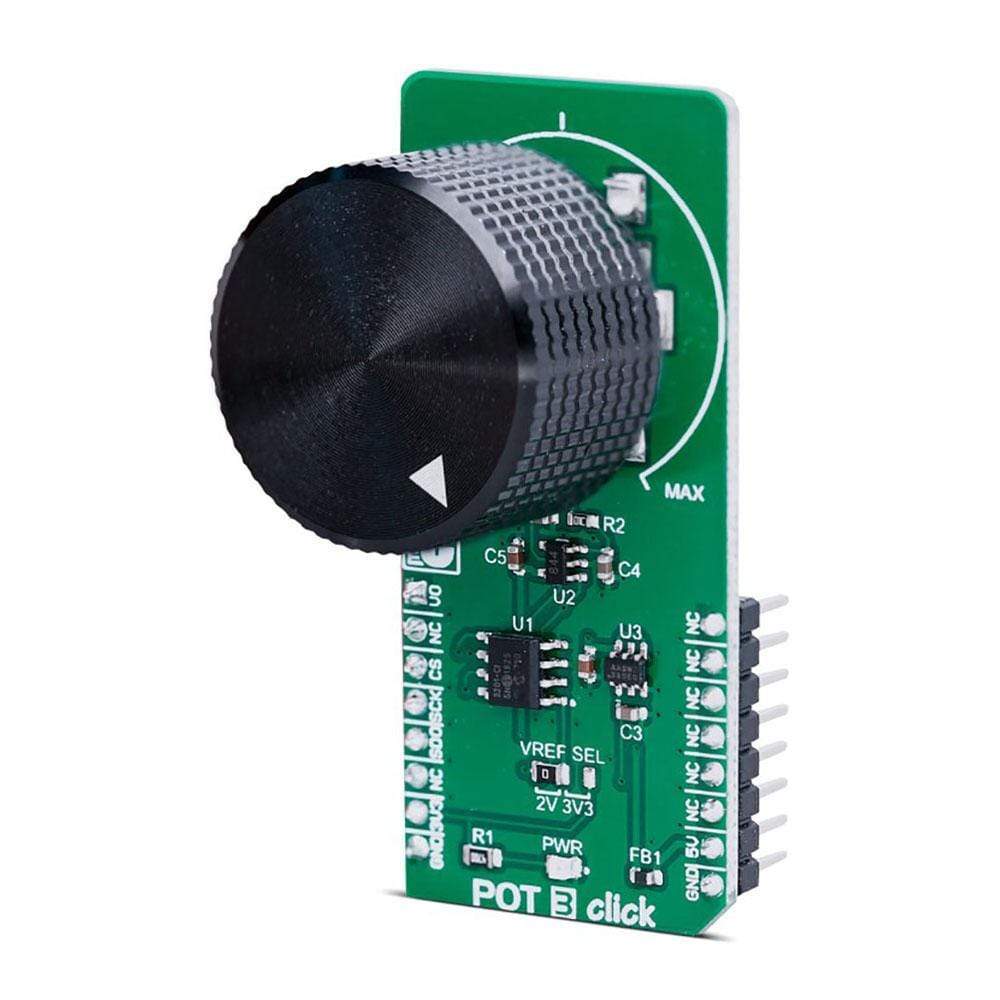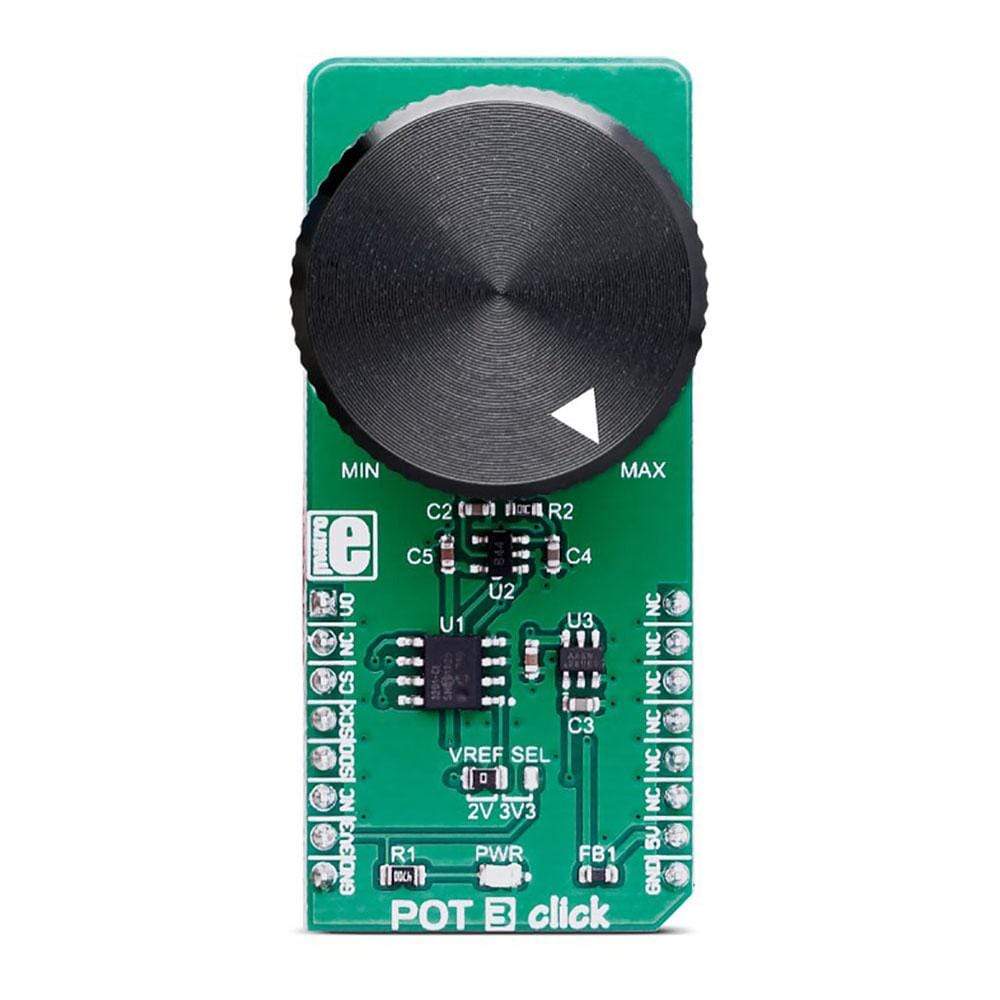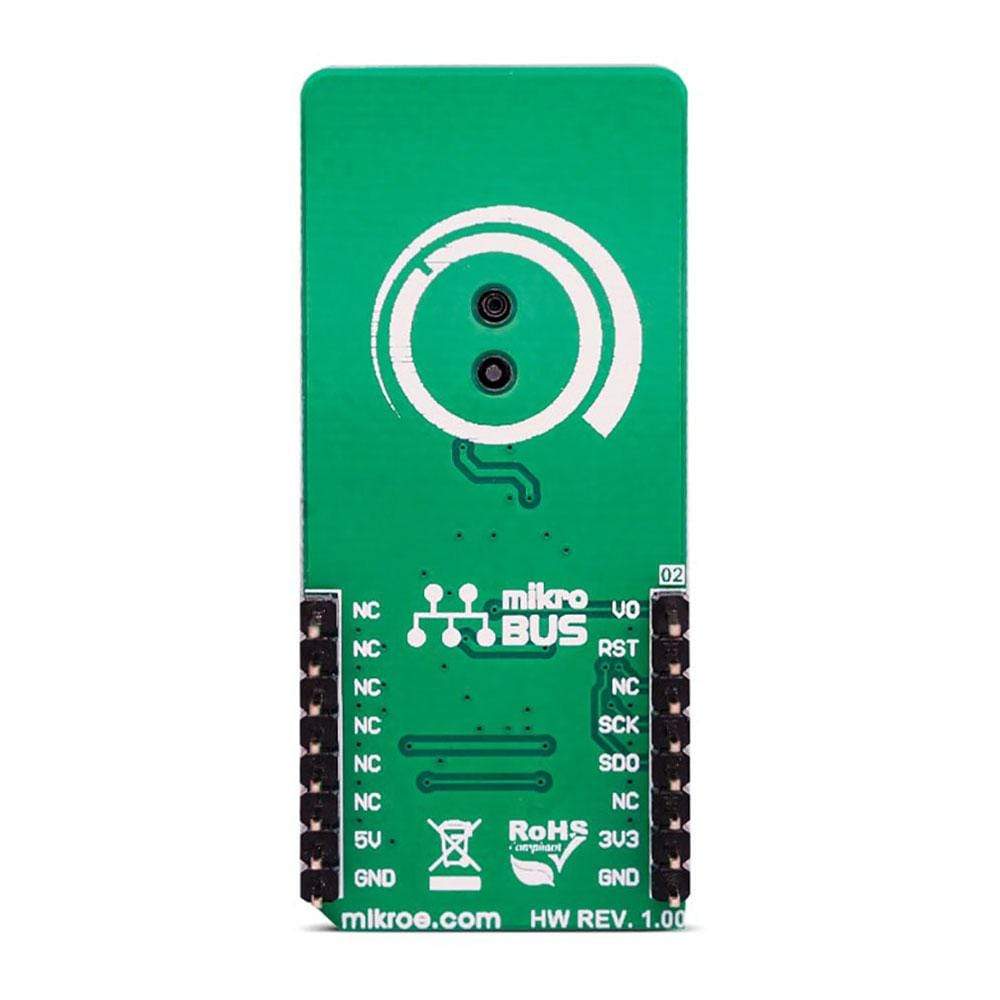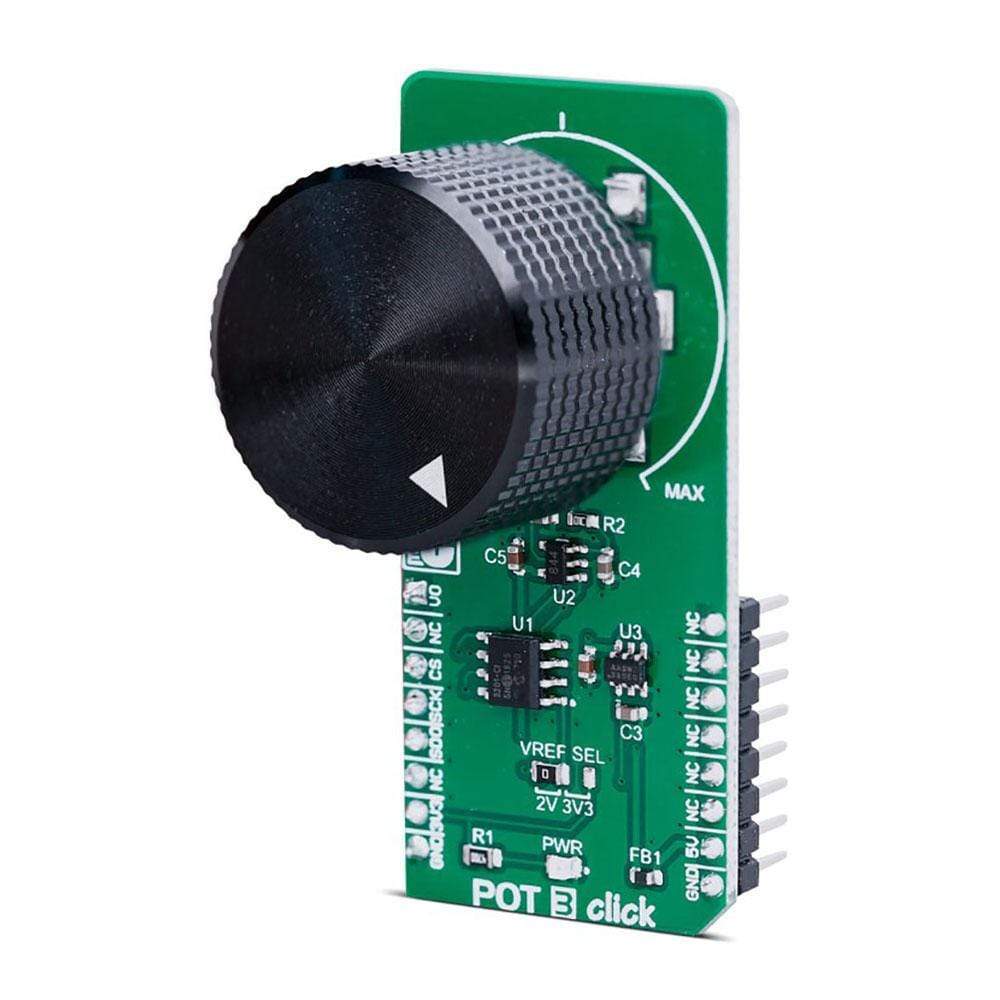
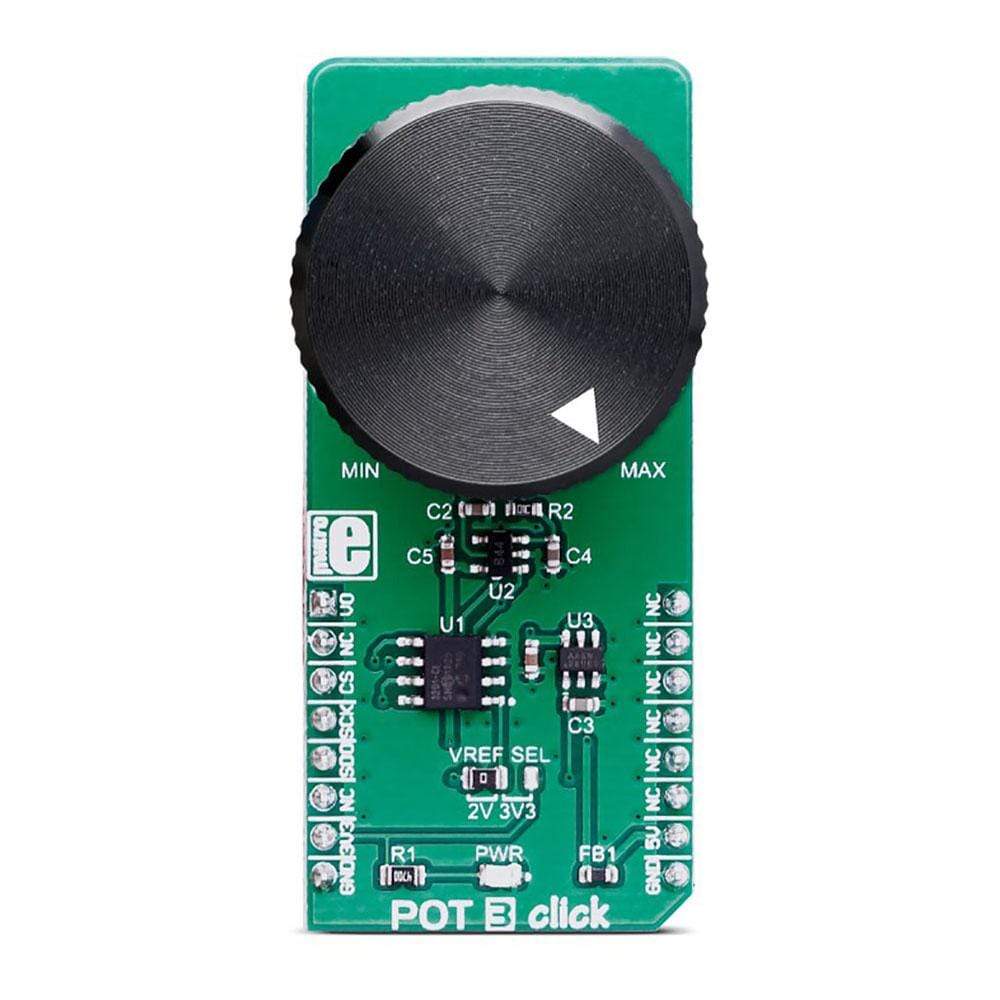
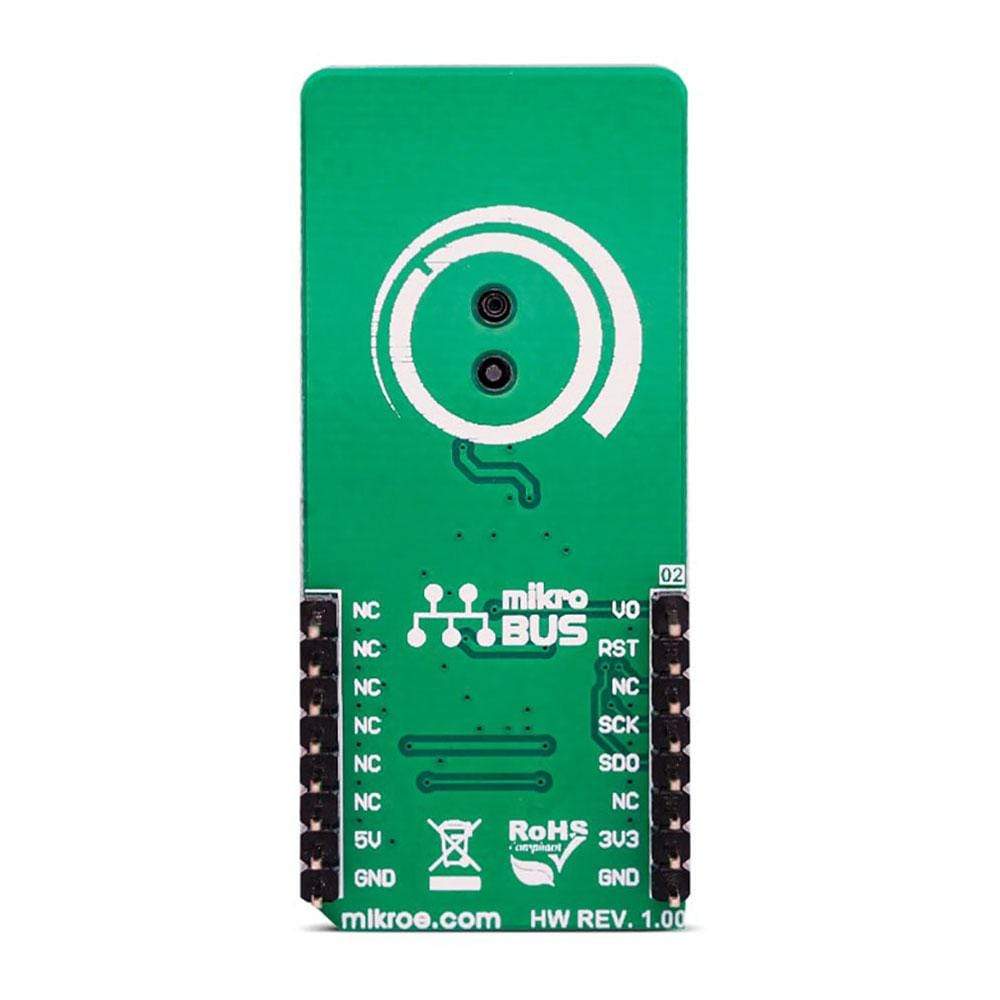
Overview
The POT 3 Click Board™ has an accurate selectable reference voltage output. By employing a high-quality 11mm, metal shaft potentiometer, this Click Board™ can provide very accurate voltage output. The onboard high-resolution 12-bit ADC can detect even the smallest move, faithfully capturing the smoothness of the slider movement, while digitizing its position. POT 3 Click Board™ is also equipped with the SMD jumper, which allows the maximum reference voltage to be selected between two typically used values: 2.048V or 3.3V. The output is buffered with a rail-to-rail buffering operational amplifier, which provides constant input and output impedance.
The POT 3 Click Board™ is supported by a mikroSDK compliant library, which includes functions that simplify software development. This Click Board™ comes as a fully tested product, ready to be used on a system equipped with the mikroBUS™ socket.
Downloads
Le POT 3 Click Board™ dispose d'une sortie de tension de référence sélectionnable précise. En utilisant un potentiomètre à tige métallique de 11 mm de haute qualité, ce Click Board™ peut fournir une sortie de tension très précise. Le convertisseur analogique-numérique 12 bits haute résolution intégré peut détecter même le plus petit mouvement, capturant fidèlement la fluidité du mouvement du curseur, tout en numérisant sa position. Le POT 3 Click Board™ est également équipé du cavalier SMD, qui permet de sélectionner la tension de référence maximale entre deux valeurs généralement utilisées : 2,048 V ou 3,3 V. La sortie est tamponnée avec un amplificateur opérationnel de tampon rail à rail, qui fournit une impédance d'entrée et de sortie constante.
Le POT 3 Click Board™ est pris en charge par une bibliothèque compatible mikroSDK, qui comprend des fonctions qui simplifient le développement logiciel. Ce Click Board™ est un produit entièrement testé, prêt à être utilisé sur un système équipé du socket mikroBUS™.
| General Information | |
|---|---|
Part Number (SKU) |
MIKROE-3691
|
Manufacturer |
|
| Physical and Mechanical | |
Weight |
0.04 kg
|
| Other | |
Country of Origin |
|
HS Code Customs Tariff code
|
|
EAN |
8606018716623
|
Warranty |
|
Frequently Asked Questions
Have a Question?
Be the first to ask a question about this.

